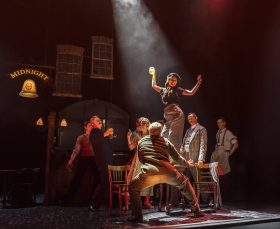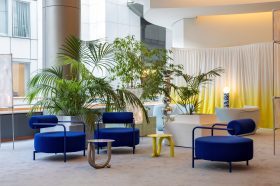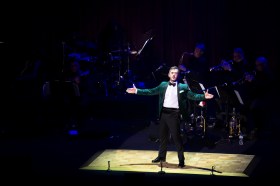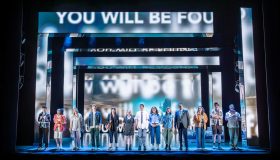We might think of an artist community as an isolated place, a center for nourishment, a place to think, create, or have a creative breakthrough. That is the old view. Artists’ communities now are often involved in developing new talent, providing outreach to the public, and helping to build bridges, artist to artist. They also now have their own mediating voice, the Alliance of Artists’ Communities. What is it, and what relevance might it have for the working artist at the dawn of a new century? Why might we need such an alliance today; and why are they still relevant?
These communities are think tanks for artists of all types. In America alone there are over 250 of them. Some are traditional artists colonies. Some are retreats; many now call themselves artists’ communities. However they are identified, these institutions have been providing a nurturing environment for creative types for more than one hundred years. Musicians, writers, painters, architects, filmmakers, poets, playwrights, photographers, scholars, digital artists and choreographers have sought them out from the earliest years of the twentieth century. Some are well-known names: the Macdowell Colony, (founded in 1907); Yaddo (founded in 1900); Penland (founded in 1926). These are the pioneers of the movement, the Ivy League of artists’ communities. Then there are the tremendously successful upstarts – places like the Sundance Institute (founded in 1981).
Many have been around for a long time. Many are in bucolic settings. Some are not; some are residency programs inside of other institutions, such as the Gardner Museum in Boston. Some are deliberately urban. But all have served the same purpose: find a way to make it possible for the gestation process to happen. Often these places have another purpose: bring artists together to do their work, give them a place to think and talk, and often they find ways to collaborate. So we can think of these havens as the gathering places, the campuses of the creative imagination.
We should not think of them merely as retreats in any tradition sense of the word. Many have a public presentation component connected to them as well. In this sense they are less Ivory Tower and more real world than in the past. They provide calm and quiet for new work to happen, and perhaps as importantly, they are also often the initial outlets for some of that work, from workshop format to fully realized productions.
The communities serve the artists. But who serves the communities themselves?
Enter the Alliance of Artists’ Communities, the relatively new kid on the block. It was founded by a program that grew out of one of the most fertile seeding-sowing foundations in America, the MacArthur Foundation, and the NEA, in 1991-92. Originally founded in Portland, Oregon, the AAC now works out of Providence, Rhode Island. And work it does: it was set up to serve, mediate and be a voice for the member communities it represents. Recent evidence indicates that collectively these communities place over 12,000 artists a year in this country alone, and that this is a dramatic increase over the past several years. Organizations such as the Alliance are doing their job.
But what is it they are trying to do beyond the original mission of providing a ‘safe haven’ for the incubating artist?
AAC sees itself as the connectors. Their directory, Artists Communities—A Directory of Residencies that Offer Time and Space for Creativity, is now in its third edition. This source book is an important tool for the artist looking for the “where”. But this is only a start. AAC actually provides a wide range of services for its community members. There are regional meetings, twice a year, to discuss topics and issues of mutual concern. There are leadership institutes, programs for new organizations, public panels on the importance of residency communities, workshops on funding sources, and advocacy and lobbying to city, federal and private organizations on behalf of members, large and small. The collective voice may well be a key not just for survival, but for growth.
At their most recent annual meeting in November, held in Pittsburgh, members talked about a full range of issues these communities now face, from the theoretical to the practical: how to collaborate with industry, how to navigate Global waters, and perennial funding issues. But also on the agenda were how to stage successful benefits; how to achieve diversity in the art place and the communities themselves, and how to be relevant outside the retreat walls in the larger community. In talking about all of this, members talked about the future of the Alliance itself.
Art is often about breaking frames and re-thinking the old. The Alliance of Artists’ Communities has taken as its mandate no less a topic than re-thinking the role of the artist in society, and making that role vital and relevant. These towers have lowered the moat, opened the doors, and now welcome a larger community to watch the creative fires close to the source.




